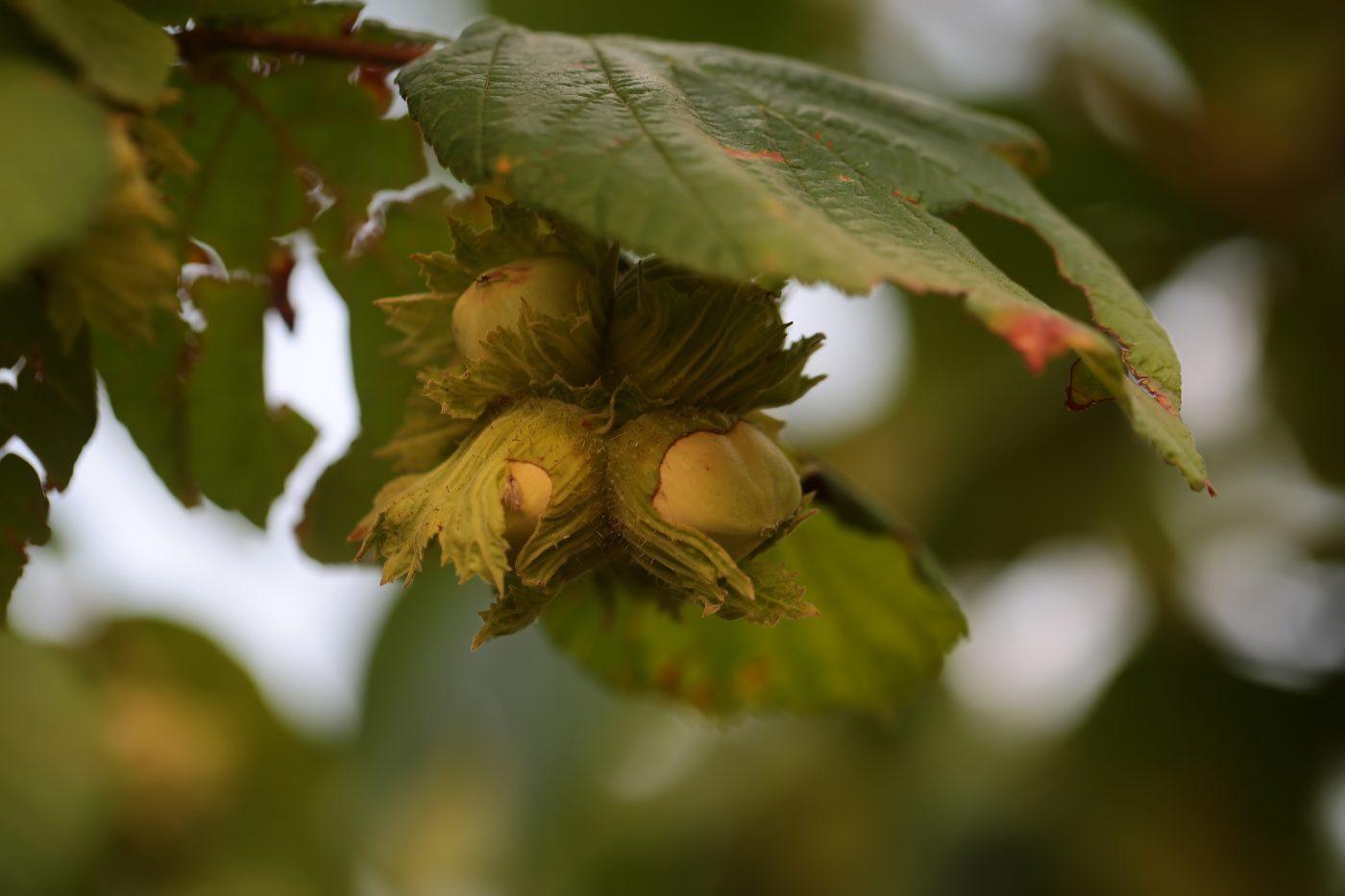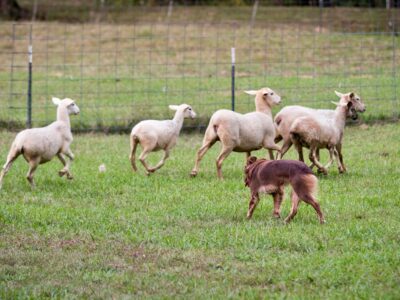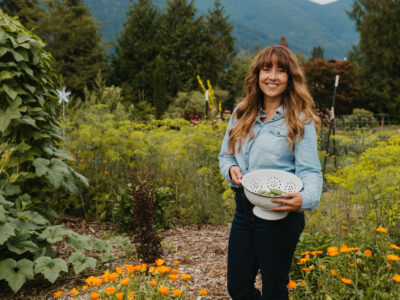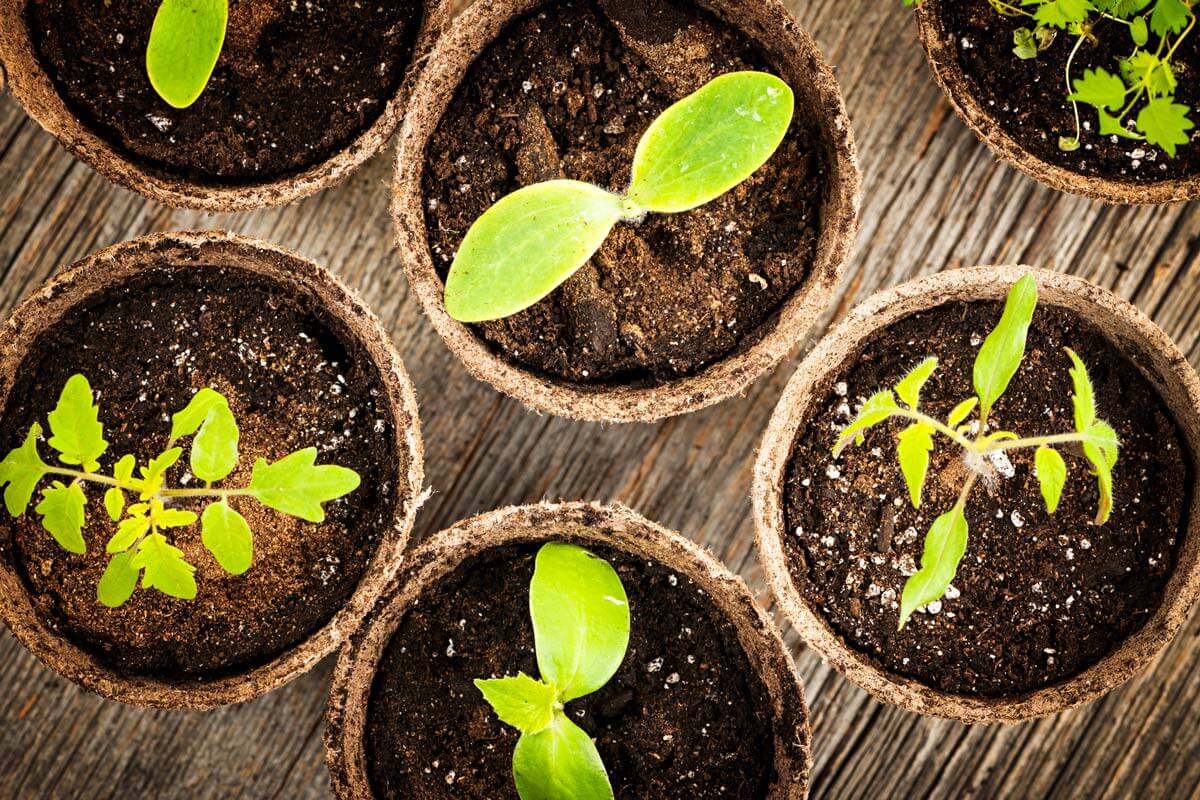Knowing what fruit and nut producing trees to plant for an earlier harvest is extremely helpful so you can choose the best varieties to feed your family. We also highlight some fun uncommon plants that are edible and provide beauty to your yard and landscape.

Today’s episode has so much great information as well as a repeat guest. I was excited to speak with Joe about growing fruit trees and perennials because they are a lot less work. I love my annual vegetable garden but there’s something to be said about having perennials that come back year after year without much effort. They pretty much take care of themselves.
Prior to the pandemic, I had planned to increase the number of fruit trees on my property. This has not changed, yet the pandemic has reinforced my belief that doing so is the right choice for my family.
You may be surprised though with the many options available out there that are lesser-known. And that there are many more plants that are edible than people know about. I learned so much in speaking with Joe from Raintree Nursery the last time I had him on the show that I brought him back so that he could give us even more fantastic information.
Listen in below to the full podcast, Episode #251 What Fruit and Nut Trees to Plant Now for an Earlier Harvest & Uncommon Plants that are Edible of the Pioneering Today Podcast, where we don’t just inspire you, but give you the clear steps to create the homegrown garden, pantry, kitchen, and life you want for your family and homestead.
…growing your own food and specifically fruit trees and nut trees is the very best investment that you can make. And the harder times get and the more uncertain things are the more valuable those trees become.
Use coupon code: Modernhomestead for 10% off your RaintreeNursery order!
Table of Contents[Hide][Show]
Little Known Fruit Trees & Berries
Melissa: What are some of the lesser-known types of fruit trees and berries that grow in North America?
Joe: There are dozens of species of lesser-known berries and 20 times more cultivars that you can grow here in the North American continent. A lot of them grow here in the Pacific Northwest. A shortlist of that may include:
- Seaberry (aka Sea Buckthorn)
- Cornelian Cherry, which is the edible dogwood, Cornus mas
- Autumn Olives
- Goumi
- Chilean Myrtle also called Luma
- Chocolate Berry, which is a Himalayan Honeysuckle
- Strawberry Tree – they’re not that choice, but they’re 100% edible
- Haskap, which is the old fashioned name for Honeyberry. Originally native to Northern Japan, it grows very well in the Pacific Northwest.
- Salmonberry, Rubus spectabilis, native to the Pacific Northwest. Some cultivars grow very large and do very well in shade.
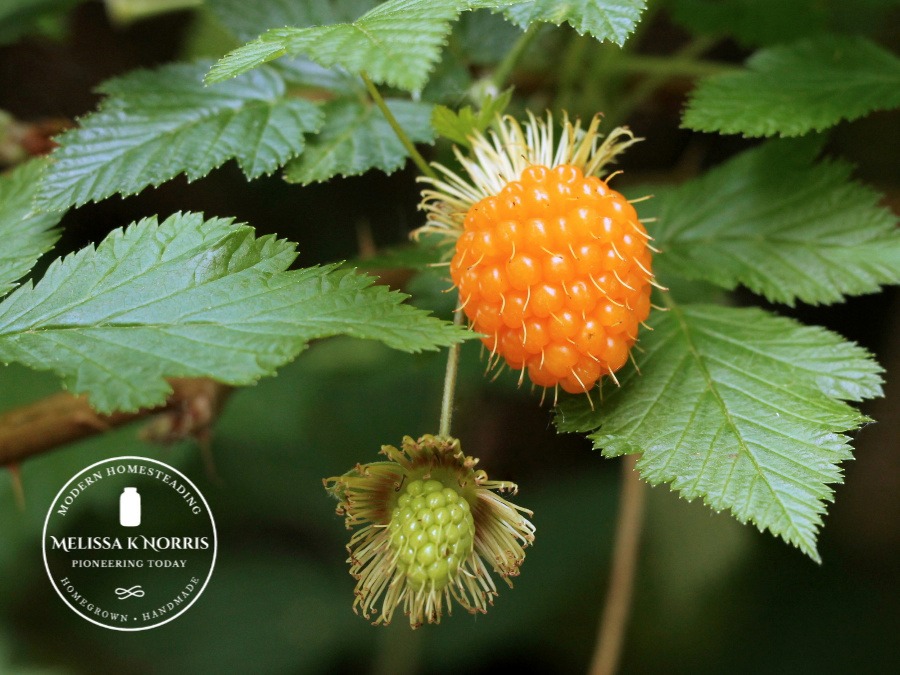
Growing Conditions for Nut Trees
Melissa: What do we need to know about growing nut trees in addition to fruit trees?
Joe: I think you’ve heard me say in the past that fruit trees are the wisest investment that you as a homeowner can make. I would say that about nut trees twice over. Nut trees are going to take longer than fruit trees to start bearing a usable crop of nuts. You’re looking at five years at a minimum for hazelnut or 10 years or longer for most walnuts and chestnuts. But when nut trees are mature, they’re actually more productive than most fruit trees of a similar size. They create more edible calories per year than the fruit does. Nuts also have a great wintertime value, providing the necessary fats, proteins, and starches the body needs long after even the very last of the keep apples have become unusable.
So the question isn’t, Should I grow nuts? The question is, How many nuts should I grow? Because you need to get them planted now if you want to have them 10 years from now.
Melissa: With nut trees, on average, it’s 10 years before you get a really good harvest. Or do they start producing younger?
Joe: No, 10 years is pretty much when they turn on. They’re big trees already and have a lot of infrastructures to hang flowers from.
What is the fastest-growing nut tree
A lot of times I tell people to start with hazelnuts because you can get them in about five years and they grow a lot faster. They’re small trees and you can get those nuts early. Then you can wait while your walnuts and chestnuts, which you should plant at the same time as the hazelnuts, really come on.
For nuts, you’re going to have to do a 10-year plan. They’re big trees so you have to plan for the fact that eventually, they will take up a lot of space. You have a choice to use that space while they’re still growing or leave it open, but that’s up to you. In the end, you’re going to need 25 ‘x 25’ for a nut tree.
Melissa: With nut trees, do they require more full sun, like a lot of fruit trees? What are their ideal growing conditions?
Joe: The trees do best in the full sun. Once a Chestnut or Walnut is fully grown, by default, it’s going to be taller and larger than most anything you’ve planted. Hazelnuts want full sun and their production will continue in partial shade, but it won’t be anywhere near as good. In Europe, what they do is plant a bunch of hazelnuts out and then plant a bunch of chestnuts or walnuts in between them. They harvest the hazelnuts until they’re no longer sufficiently productive and then cut them down because by then they’re drowning in chestnuts and walnuts anyway.
Is There Truth to Toxic Nut Trees?
Melissa: I assume only the Black Walnut can be toxic to other plant life around it. Is it only the Black Walnut or does that extend to any of the other walnuts too?
Joe: Well, the term is not toxic. It’s allelopathic. There are oils in the Black Walnut itself that prevent root growth in seed germination. That said, I have four black walnut trees of my own and there’s a whole lot that grows under them. I wouldn’t really consider black walnut to be toxic or dangerous as a tree. It has a reputation for that, but my personal experience from having personally grown them is that it’s overhyped. Cedar trees are way more aggressive and difficult to grow next to your food crops than black walnuts are.
Cedars are chemical warfare factories. They have so many caustic and allelopathic oils that they produce. There’s very little that grows under them; maybe seven to nine different plants you’ll find natively grown to those trees. The soil is either too acid, too dry, or they can’t deal with the oils that are constantly dripping from the cedar trees.
NOTE from Melissa: There are some crops that are more tolerant of being planted near a walnut tree than others. For a listing of which plants are more tolerant and which aren’t Iowa State University has some great information in their article, Black Walnut: The Killer Tree. The compound in walnut trees that can be a toxin to certain plants, called juglone, is present in all walnut trees, it just happens to be more concentrated in the Black Walnut.
Other Uncommon Fruits & Berries
Melissa: What other uncommon or lesser-known fruits and berries do you offer?
Joe: Raintree has long been a destination for heritage and unusual edibles. The longer I’ve been doing this, the less unusual these things become to me but for the average person, the following could be considered unusual.
- Passion fruit has an almost alien-looking kind of flower, which is one of the major selling points for it. Please really like that and it has pretty good fruit on it too.
- Wintergreen, which is a small ground cover like plant with big bright red berries that taste well, like wintergreen. It’s where the wintergreen oil comes from. That sharp, spicy, cool, aggressively almost cold flavor is right there in the little red berry. It’s very surprising when you eat the berry and are expecting something else.
- Akebia is a very weird kind of looking fruit. It’s a seasonal delicacy in Japan. I’ve had some, it’s pretty good. The texture is kind of weird. They look like big alien bean pods and that have a pseudo gelatinous, kind of like mochi ice cream, textured gel interior, which has some seeds but tastes like banana custard.
- Toona Sinensis or Fragrant Spring Tree is considered to be invasive in the south, North Carolina through Georgia. Chinese Red Mahogany is another name for it as well as Tree of Heaven. It’s sometimes called Chop Suey Tree because the leaves are edible when harvesting the lower leaves when they’re young.
- Andean and Incan tubers, like Yacon. They’re like spicy potatoes and grow very well in the Pacific Northwest. Some are best after light freezes.
- Holboellia Vine, also called Sausage Vine or China Blue Vine, is related to Akebia. The fruit looks like a sausage.
There is way more edible food than we think there is out there in the world.
Melissa: Definitely. One fruit tree I plan on getting is a PawPaw tree. Could you tell us more about that?
Joe: Paw Paws are native to the east coast of the United States. It’s otherwise known as the custard apple. Paw Paws, Asimina triloba, is evolved to grow in understories. They need full shade for the first three years of their life. The bark is particularly thin and they will scald and die from too much direct sunlight. As the tree gets older they shoot up to 20 to 25 feet, they’re supposed to break the canopy and get full sun on their leaves while maintaining a certain amount of shade on their trunk. Places where Paw Paws are grown in plantations they use a dye of diluted latex white paint to apply to the trunk which will protect it from scalding to some degree.
They produce large yellowish-green to brown fruit. There’s a lot of different improved Paw Paws that exist now. They’re a tap-rooted plant. The taproot is very fragile so when planting it, you have to make sure that the soil is loose and that you don’t break that taproot when you put it in. They also need lots and lots of mulch, like every year leaves are decaying on me all the time around me because they live in a deciduous forest kind of mulch.
It’s not a plant it and forget it kind of plant. They get huge and can be very productive, but you’re going to spend some time keeping them healthy and happy.
Melissa: Well, I had not done my full research yet so I’m glad I asked you. I’m going to have to go out and scout, like the forest edge or the top pasture where we have some alders and maples. I’m assuming I’d have to put some protection around it when it’s young so the cows don’t nibble on it. It sounds like it needs to be in that type of environment. It’s not one to plant out in the middle of your field or sunny area in the garden.
Joe: Or you can use hoop houses in shade cloth to protect it by giving it that kind of shade. That’s another option.
Melissa: So the first three years I’m assuming it doesn’t get too tall so it’s easier to shade it.
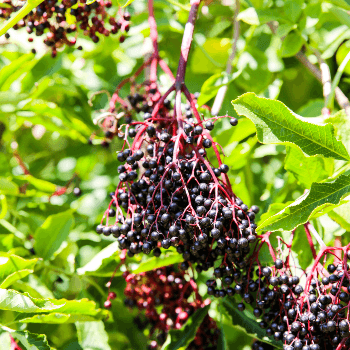
Joe: They grow quickly but you should be able to pull it off. Other people have done it, there are Paw Paw plantations that exist. They’re right out in the full sun and were able to get situated and developed. I wouldn’t say that it’s anywhere near impossible to do. It’s just one of those things that takes more care. They have a high attrition rate, 30% death rate in a transplant. You just have to be prepared to be careful and caring and not get your hopes up too high because if one dies, that’s not uncommon.
Berries With Medicinal Properties
Melissa: With the pandemic that is affecting much of the glove, what do you know about berries with medicinal value?
Joe: There are lots of awesome fruits, vines, and berries that have medicinal qualities. Some of them are very common, like raspberries and blueberries.
Blueberries are a huge superfood. They’re good for your insulin. In some studies, blueberries have been found to actually improve or even reverse insulin resistance in diabetic and pre-diabetic patients. They improve your memory. They are, of course, full of antioxidants that help prevent cancer, full of vitamin C to help keep your immune system strong.
Raspberries. They’re full of vitamin C and other vitamins and nutrients. There is some belief that raspberries can help improve eyesight as you get older since macular degeneration is primarily a vitamin C issue. At least that’s what studies suggest. I’m not a doctor.
Elderberries. Other berries that have health benefits, of course, elderberries. Elderberries are a very long and deeply respected berry with lots of folklore and tradition around it. There is some empirical evidence that there is active antiviral components in elderberry, which makes it very germane to the things that are going on right now here in the United States and the rest of the world. And they’re pretty easy to grow. One does have to be careful to make sure to cook elderberry because they do upset the belly quite firmly when eaten raw. I wouldn’t say they’re dangerous but there’s a certain amount of cyanide that’s created in raw elderberries when you digest them. So you definitely want to cook them. There’s no cyanide when cooked and you can benefit from those antiviral properties. You can also benefit from the nutrients, flavonoids and all the vitamin C that’s in them. They’re fantastic. I personally have elderberry syrup in my fridge all the time.
Wintergreen. It’s a regular medicinal berry they use in China. Wintergreen oil, in particular, is used topically to reduce inflammation.
Seaberries or Sea Buckthorn are incredibly nutritious and high in vitamin C. So much so that the majority that we have are improved varieties created by the Soviets during the cold war. It was such a critical berry for their military operations to keep the soldiers and the population healthy and strong during a time that they really doubled down on improving the seaberry a lot. Eating them is like orange juice concentrate, there’s a lot of vitamin C, but there’s also a lot of sugar in it that kind of buffers it. They’re fantastic.
Schizandra Berry (Schizandra Chinensis) or what we call Eastern Prince Magnolia Vine. Very, very healthy. Again, the Russians and Chinese both love Schizandra berry. It grows well in the shade. The tips of the vines can also be boiled as kind of an ad hoc caffeine boost, like coffee or an energy drink. That’s what it’s traditionally used for.
Ho Shou Wu Vine, or Five Flavor Berry, long prized by the Chinese for a general blood energy tonic. It’s one of those things that you eat all the time that keeps you healthy and happy.
Melissa: There are some there that I have never had or tried, now I need to add to my list! Especially the ones that grow in shade.
I know a lot of people are looking to grow elderberries so do you know, how long after you plant European elderberry before you begin to get production?
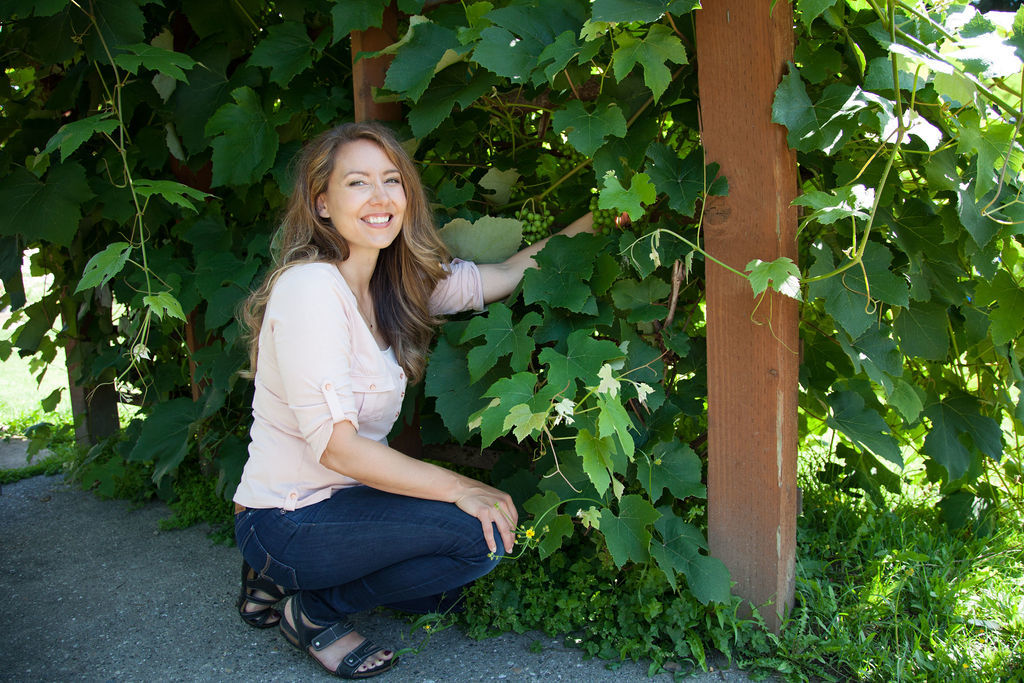
Joe: Typically they produce pretty quickly. The think about elderberries is that their roots are fragile so you don’t want to mess with them too much. They feel like they’re elastic but they’re actually quite brittle. They can take a certain amount of handling but if you tug on them too hard they just snap, which is very bad for the plant. They’re not one that can just grow off one root and be fine. They need all their roots and water. Where it’s very dry summers elderberries will suffer badly without supplemental water. If you can plant them without damaging them and give them supplemental water, you should have fruit as soon as the next year. Certainly, within a couple of years, they’ll start flowering and fruiting.
Fruiting Vines
Melissa: Earlier we talked about some vines. I have grapes, which I typically make juice, jelly, and jams with along with fresh eating. This year I’ll be trying wine. But besides grapes, what are other kinds of fruiting vines that are pretty easy to grow?
Joe: I mentioned one earlier but there are others as well.
Akebia. You can grow Akebia by falling asleep next to it. It’s pretty easy to grow vine. You do need two of them to make sure you get cross-pollination. Akebia loves to grown and it is really well-suited for the Pacific Northwest. It doesn’t like too much heat, so for the audience that lives in a hotter, drier climate you’re Akebia might need a little bit of partial shade.
Arguta Kiwi. It isn’t very hard to grow. Keep it somewhat wet but not too wet. Keep it out of the wind. As soon as it starts to flower it drowns you in fruit. Once they really get established, I actually have to fight to prune them more than growing them because they will grow very, very quickly and create massive amounts of wood every single year. They do tolerate some partial shade as well though their fruit quality is far better in full sun.
Melissa: Do they need a trellis type system?
Joe: Yes, most vines require something like that because they want to grow up. That helps them flower. That’s the way they’ve evolved. If a vine can’t get some height, then it’s not in an environment that promotes production. It’s not going to promote production until it can find some sort of vertical place to live: up a tree, on a fence, an arbor, on the side of a house. Just letting it lay on the ground, it’s not going to flower readily because it’s not an environment that’s good for reproduction.
Can I Grow Citrus?
Melissa: I’m technically a zone 7A but where I live we do occasionally have winter storms where we’ll get single-digit and lower temps. Can I grow citrus where I live? How about the rest of the Pacific Northwest?
Joe: The short answer, yes and no as with most things with plants. Even though you’re in zone 7, which is one of the warmer zones through the Pacific Northwest, you’re still about a zone and a half short of being able to grow citrus outside. But that’s the no part. What about the yes part? That’s where stuff like Meyer lemon comes in.
Meyer lemon is probably the most commonly known by backyard growers. It’s grown in the southern United States just as often as it’s grown anywhere else, but it’s a dwarfing lemon tree and has been bred for that. They do great in pots and can be kept outside for six to eight months, but once the winter period starts they need to be taken inside so that they keep that temperature that they need. But they do fine in a pot. You can put it in a whiskey barrel and roll it in and out.
Australian Finger Limes can be grown in even smaller pots and do well in similar conditions.
Calamondin can be grown inside during cold periods and outside during the summer and it will fruit.
Yuzu is a Japanese citrus that is an evergreen and will remain an evergreen outdoors in the Pacific Northwest. It produces a very powerfully flavored lemon-lime fruit.
Melissa: Since I know a lot of people are familiar with the Meyer Lemon Tree I’ll ask, what can you expect as an average harvest from a tree that’s in a whiskey barrel?
Joe: Realistically you’d probably get 15 to 20 fruit from those trees. They do much better in hotter climates where they can grow larger and more freely outside. They can be incredibly productive in those parts of the world.
Melissa: Ok, so it might be worth it. If you were to say 10 or 2 then I don’t think it would be worth it, unless someone really loves the way the leaves look.
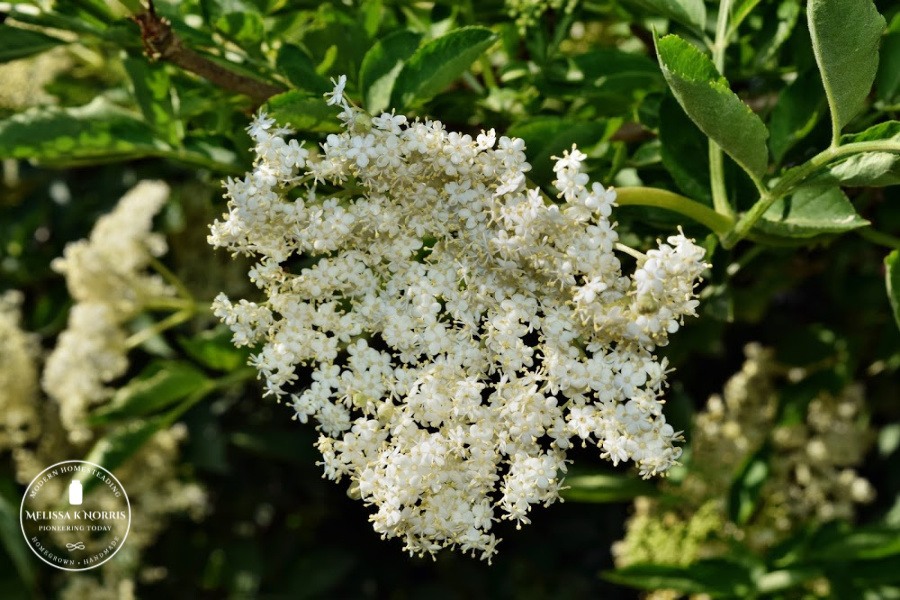
Uncommon Plants That Are Edible
Going back to edible plants, are there any commonly grown plants that are edible? I personally know hostas are edible but a lot of people don’t know that.
Joe: There are plenty of them. Almost all the flowers are edible. This is one of my favorite subjects is things you can eat that you didn’t think you could.
Day Lily Petals are one of my favorite examples. They’re crispy, sweet texture is really pleasing and much like potato chips, you definitely want to keep eating them. It’s a sad thing when you run out of day lily petals. It’s a very seasonal treat but it’s fantastic. Lots of people grow them but they don’t grow them for eating the flowers. 100% can and should in my opinion.
Maple Blossoms. People grow maples all over the place and the blossoms are very edible and very awesome. They’re mildly sweet. They’re vegetative, but they have this nectar thing going on, of course, because they’re blossoms. The native people used to eat them really regularly. Again, it’s a very seasonal treat because they’re not in bloom for long, but you should definitely go out and try them when you can.
Elderflower. These should be cooked and used as a flavoring.
Fireweed Flowers are very sweet.
Chickweed Flowers are also very sweet and 100% edible.
Bamboo. Most forms of bamboo are edible. Some are more choice than others, but one year old shoots can be harvested. Peeled, it’s a little bit of work, but with some preparation, bamboo is very commonly eaten in other parts of the world.
Plantain tastes a bit like spinach. It’s arguably more nutritious. I suspect all of the audience probably have plantain in their yard right now.
Dandelion Greens and Blossoms. Most people are aware that dandelion greens and blossoms are 100% edible. Did you know that the dandelion is related to lettuce?
Cattail Pollen. Cattail Pollen is something like 91% protein. It’s basically a naturally occurring protein powder. You can stick the cattail in a plastic bag and shake it up. Do that enough times and you’ll have a whole gallon zip lock bag full of protein powder.
Fruits That Produce Quickly
Melissa: With hazelnuts having a 5 year period before a harvest and nut trees taking up to 10 years to produce a harvest that feels like a really long time away. If someone really wants fruits and berries that produces a crop much quicker, what are some varieties or options that provide a faster harvest than the others?
Joe: The good news is that if you start with berries, you’re going to get fruit right away.
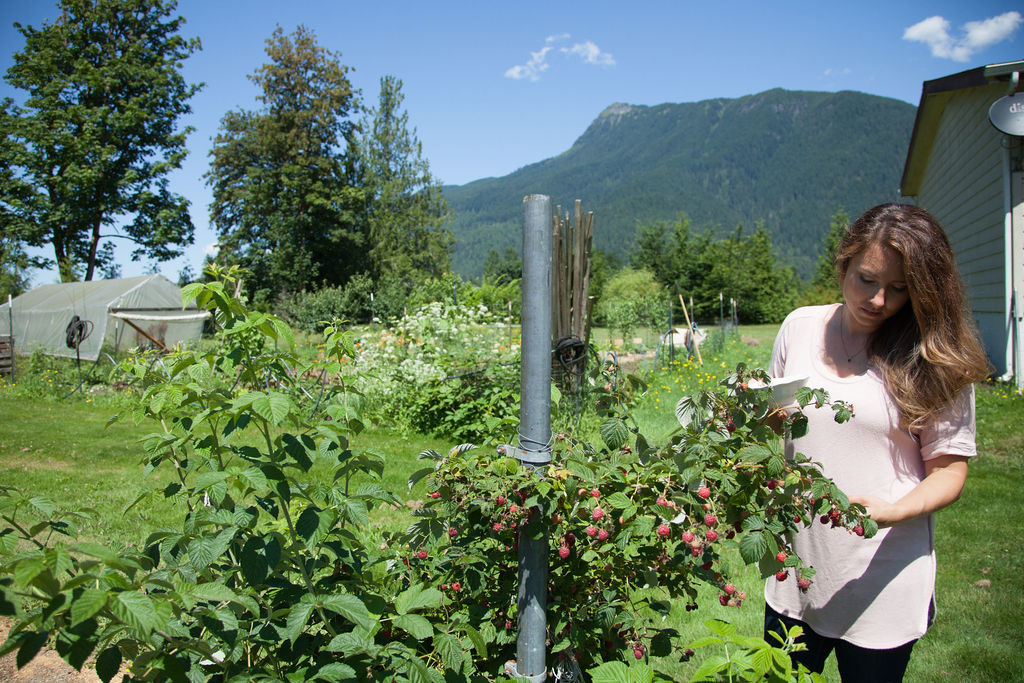
Harvest Within the Current Growing Season to The Following Year
- Raspberries
- Blackberries
- Strawberries
- Loganberry
- Marionberry
Harvest Within 3 to 5 Years
- Quince
- Cherry
- Peach
- Blueberry
- Plum
- Pear
- Apple
- Grapes
Later Harvest (5+ Years)
- Nut Producing Trees
- Seaberries
- Kiwi
- Apple varieties that are on the large stock
One of the big advantages of dwarf trees is that they put on fruit faster for people that need the fruit faster. Another limiting factor on trees is the trees can start trying to reproduce before the root system is really ready for it. So you have to thin that fruit and limit that reproduction. So that three-year line isn’t exactly because they won’t make fruit, it’s because they’re too young to make fruit. If you got fruit right away, but then your tree died in five years, you wouldn’t be happy. So you want to make sure that you encourage the tree to put its energy into its root system. Then after that, it can make more fruit for you for many more years.
But if you want food right now, it’s going to be the berries. They’re going to produce very quickly and you can certainly plant a bunchy of them to have a bunch of food pretty readily.
Melissa: Excellent tips.
It was mentioned earlier that Raintree has a lot of heritage varieties compared to a lot of other nurseries. As far as heirloom goes when referring to seeds I’m well versed. Can you give me a brief encapsulation of what heritage means in regard to fruit trees and berries?
Joe: In regards to fruit trees and berries I define it as not one of the very small handful of varieties that you find in your supermarket and preferably ones that have a history. Which means mostly that they came from Europe. Examples might be:
- Cox Pippin Apple Family (Cherry Cox Apple, Cox Ellison’s Orange, Cox Orange Pippin)
- Brown Russet Apple – a very old, very common apple popular to this day in England
- Bardsey Apple – basically not grown outside of Wales. It’s an awesome apple with a really interesting history.
- Imperial Epineuse Plum – a prune plum by which all prune plums are judged against. It’s literally the yardstick the French use for all prune varieties.
- Mirabelle Plum Family – Fantastic plums
- Gage Plum Family – Very British, but very amazing. Most people don’t even know about this. They know about the Italian plum, some people know of the Japanese and American plums.
It’s not the fault of the consumer that they don’t know about all these amazing varieties because there’s a limit to what you experience when there are only 8 different varieties of fruit in the grocery store. That’s all you think exists. But there are 2,500 varieties of apples grown commercially in North America. It’s estimated to be over 7,000 varieties grown period out of the documented 12,000 varieties of apple grown all over the world. Some of which admittedly don’t exist anymore, but they were documented to have been growing at some point. That’s a lot of different kinds of apples.
We’re not even getting into crab apples, which were the workhorses of old orchards.
To wrap up, growing your own food and specifically fruit trees and nut trees is the very best investment that you can make. And the harder times get and the more uncertain things are the more valuable those trees become. So set aside some land, buy some plants, put them in the ground and make the world a better place.
Where to Find Raintree Nursery:
Facebook
WordPress
Instragram
Website
Use coupon code: Modernhomestead for 10% off your RaintreeNursery order!
Other Resources:
How to Grow Elderberries & Planting Tips
When and How to Plant Fruit Trees
How Many Fruit & Berry Plants Per Person
5 Tips to Starting and Orchard & Growing Fruit
How to Create Edible Landscaping – Forgotten Plants
8 Medicinal Plants You Need to Add to Your Garden This Year
How to Treat Fruit Trees Organically: When to Spray for Disease
